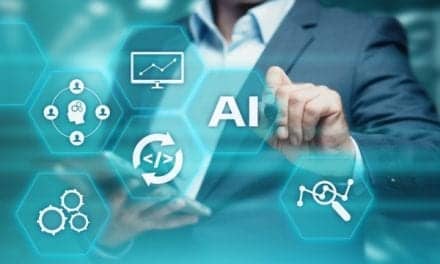An artificial intelligence (AI) algorithm measures breast density at the level of an experienced mammographer, according to a new study published in the journal Radiology and reported by the Radiological Society of North America. The researchers say the study, the result of a collaboration between breast imagers and AI experts, represents a groundbreaking implementation of AI into routine clinical practice.
“We’re dependent on human qualitative assessment of breast density, and that approach has significant flaws,” say study lead author Constance D. Lehman, MD, PD, from Massachusetts General Hospital (MGH) in Boston. “We need a more accurate tool.”
Lehman and colleagues collaborated with AI expert Regina Barzilay, PhD, professor of computer science and electrical engineering at the Massachusetts Institute of Technology in Cambridge, Mass., and her team to develop an algorithm that can automatically measure breast density. They used tens of thousands of high-quality digital mammograms from MGH to train and test the algorithm before implementing it in routine clinical practice. Eight radiologists then reviewed 10,763 mammograms that the model had determined were either dense or non-dense tissue.
The interpreting radiologist accepted the algorithm’s assessment in 10,149 of the mammograms, or 94%. Lehman notes that the 94% agreement rate between the radiologists and the algorithm does not necessarily mean the machine was wrong in 6 % of the cases. Reader variability could affect the disagreement because radiologists visually assess breast density, which is subjective and qualitative.
“The study results show that the algorithm worked remarkably well,” Barzilay adds. “But what’s more important is that it is being used every day to measure breast density in mammograms at a major hospital.”
The system has been in continuous operation at MGH since January and has processed approximately 16,000 images, according to Barzilay. Lehman attributes the successful clinical implementation of the AI model to two components: the availability of high-quality, annotated data evaluated by expert radiologists, and the collaborative efforts of experienced, accomplished medical and computer science professionals.
“We have to have radiologists and other physicians who understand the pressing needs of our patients and can partner with computer scientists who are experts in AI,” she says. “That is the collaboration that is going to move the field forward.”
The algorithm has the potential to standardize and automate routine breast density assessment, the researchers say.
On a broader scale, they see AI as central to the development of personalized breast cancer risk assessment for each woman who undergoes mammography. AI is uniquely suited to breast imaging because it can draw upon a large, mature database with advanced, structured reporting that links images with outcomes. This predictive power is a potential boon to all women, including groups who have been inadequately served by current prediction models. For instance, research has shown that current predictive models tend to underestimate risk in African-American women.
“With AI, we now have the ability to leverage vast amounts of information into more personalized, more targeted care for our patients,” Lehman adds. “In the case of breast cancer, we can better predict how likely a woman will have cancer in her future and improve the chances that it will be treated successfully.






